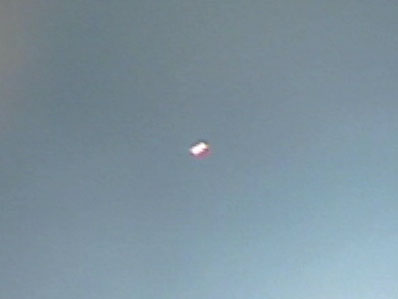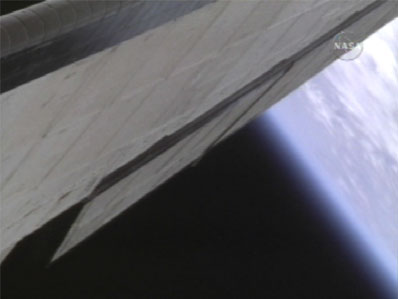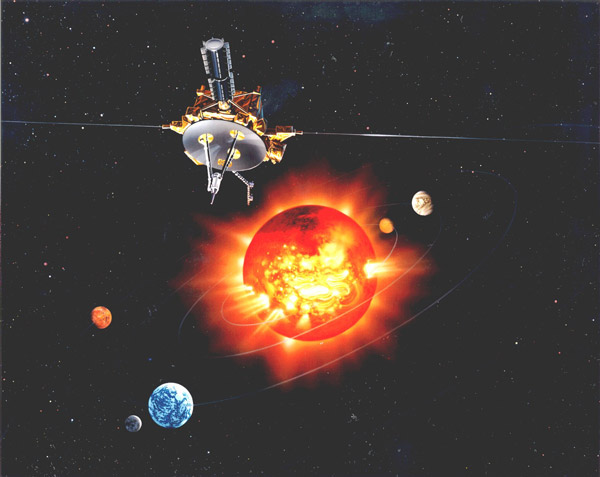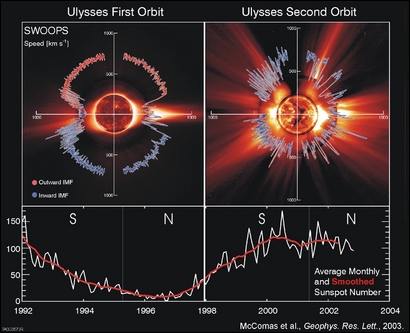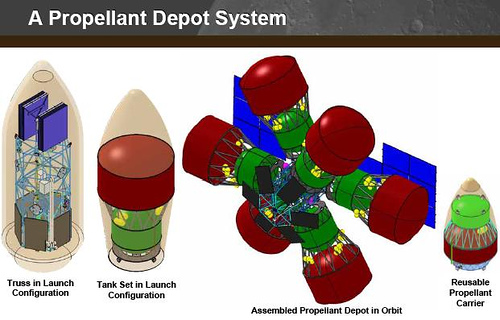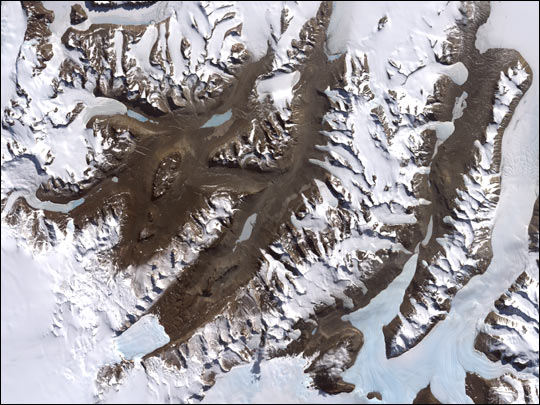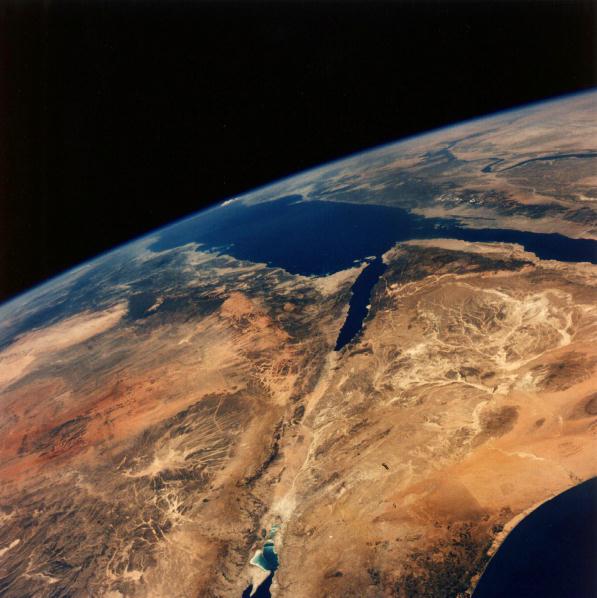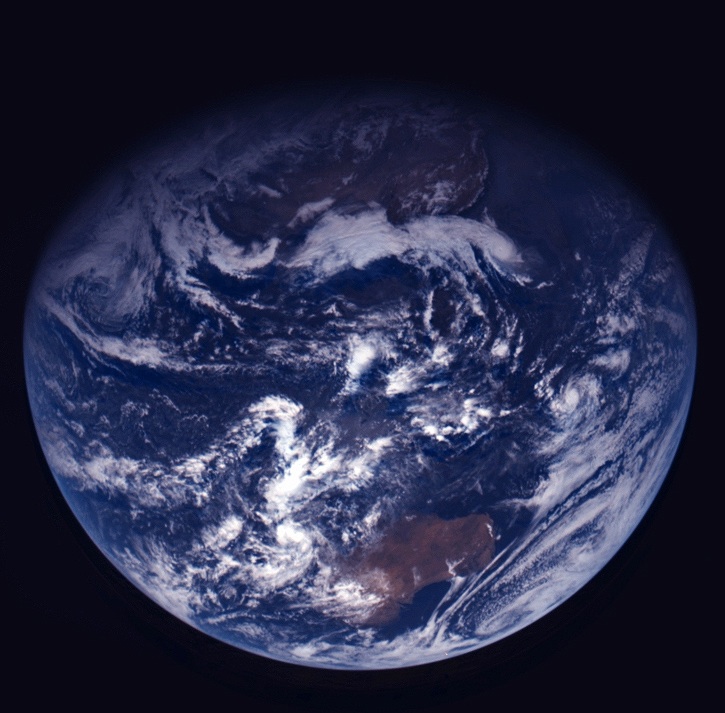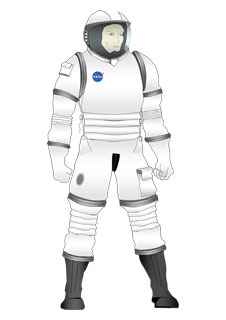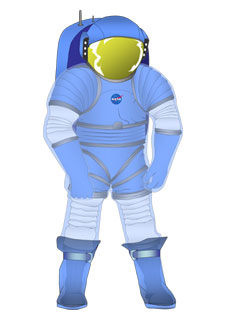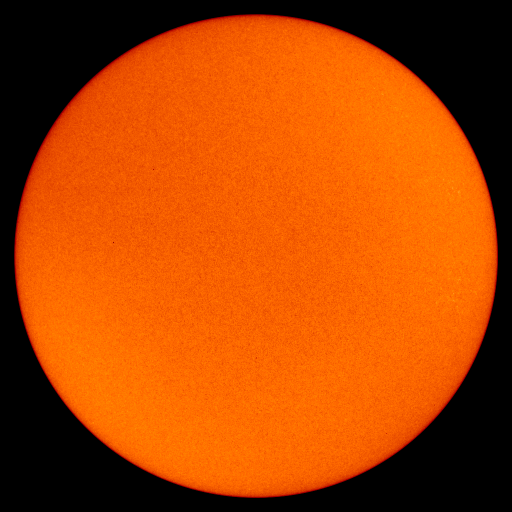Update: After a quick but thorough analysis of photos and video of the object and the “protuberance” on the shuttle tail fin, NASA officials say neither should pose any problem for the shuttle landing on Saturday. The object floating away was determined to be one of three thermal clips that are inside the rudder speed brake on the tail fin. They are normally fixed to the back end of the rudder, and NASA astronaut Terry Virts said it is common for these clips to be missing following a mission. Image analysts compared previous images of the clips to telephoto images taken by the crew today to determine it was one of the clips. The “protuberance” on the tail fin is considered to be “nominal” or normal, and was just a separation in the tail’s thermal cover that was enhanced by the lighting from the sun at that time, and does not pose a problem.
This morning around 6:30 am EDT, the crew of STS-124 activated the shuttle’s auxiliary power units to test the shuttle’s re-entry systems for Saturday’s scheduled landing. Everything checked out fine, but shortly afterward the crew reported seeing an object floating away from the shuttle. The crew was able to capture video of the object as it tumbled away. “We observed an object depart aft of the starboard wing,” Commander Mark Kelly said. “Looked like, and obviously it’s hard to tell dimensions and size looking out the aft windows, but it looked like it might have been a foot to a foot and a half in width. And we’ve got a pretty reasonable image of it.”
Additionally, the crew also noticed a protuberance on the shuttle’s tail fin, thought to be a small piece of thermal insulation. NASA TV reported that NASA officials are not currently overly concerned about the protuberance, but additional images are being taken by the crew and downloaded for review by experts in Houston.
NASA TV commentator Rob Navias it is not uncommon for objects to become dislodged from the payload bay or for ice from the engine bell to become dislodged after the shuttle has unusual movements, such as when auxiliary power units are activated or tested. However, the object is large enough that further review of the incident is warranted. There is no concern about the object re-contacting the shuttle, but it is being tracked from the ground.
NASA is also studying video plus digital stills of the area on the shuttle’s tail fin, at the intersection of the lower and top sections of the rudder that meet to form the speed brake, used during landing. All the aero surfaces of the rudder and speed brake were tested this morning, with five movements in either direction, and no unusual data was detected. NASA reports that all the landing systems appear to be in good shape to support entry and landing.
The area in question on the tail fin is covered with a reusable thermal protection system and it does have a thermal barrier seal. That seems to be where the slight “bump” as the crew called it, or protuberance is.
This morning Kelly, Pilot Ken Ham and flight engineer Ron Garan are honing in on their piloting skills by conducting a computer simulation of landing the shuttle.
There will be media interviews with the shuttle crew at about 11:50 this morning, where details of the object and protuberance might be discussed. Look for updates here.
News Sources: NASA TV, Spaceflightnow.com

